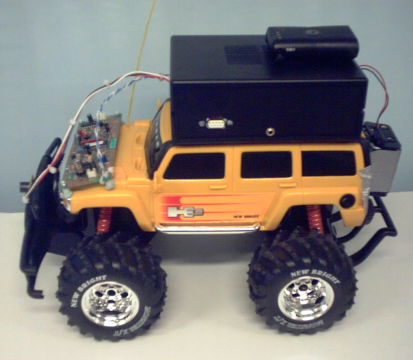In the context of the Urban Tapestries (UT) project, Proboscis in collaboration with Birkbeck College developed a mobile sensor prototype -- dubbed "feral robot" -- capable of wirelessly uploading real-time, geo-referenced environmental data into the UT public authoring servers. Interested parties can visualize the collected data (e.g. air quality, etc) overlaid on a geographical map.
The first generation feral robot, developed by Natalie Jeremijenko, adopted an autonomous behaviour, roaming in the direction where the on-board sensor detected greater pollution concentration. However, this original system was based on a very simple microcontroller (PIC) that is unlikely to support real-time data communication using modern wireless networking technologies, thus making it unsuitable for integration with the UT public authoring framework.
For the second generation feral robot, documented in this report, due to time and funding constraints a key simplification to the requirements was defined to complete a working proof of concept: the autonomous mobility feature was sacrificed. The system was, instead, simply mounted on a remotely controlled all-terrain vehicle, without any interfacing to the car's control module.

Feral robot prototype, version 2.